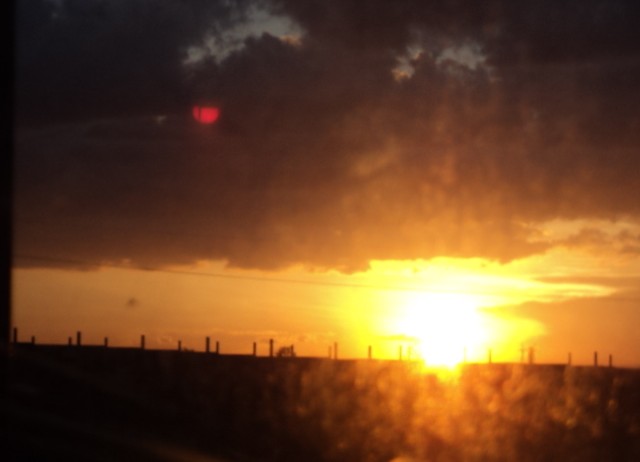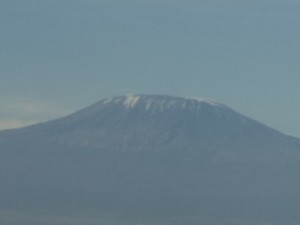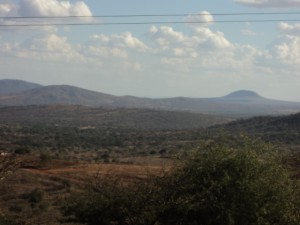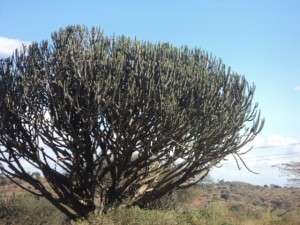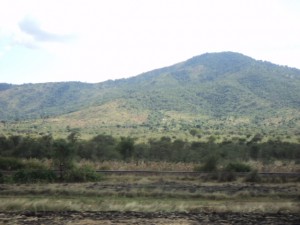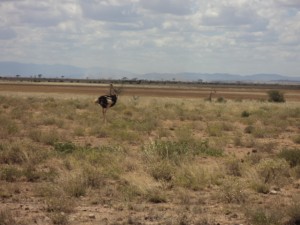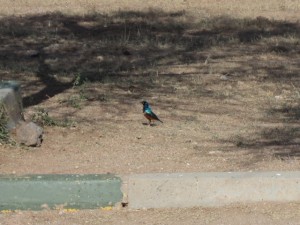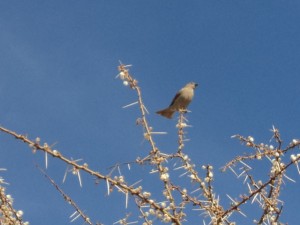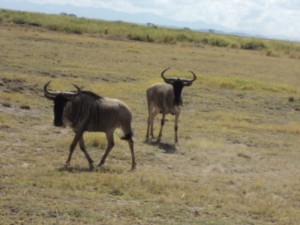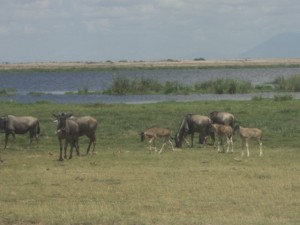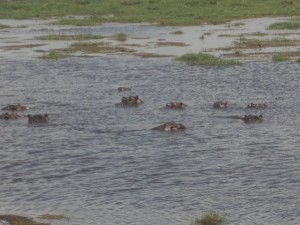Amboseli National Park, formerly Maasai Amboseli Game Reserve, is in Oloitoktok District, Kajiado County in Kenya. Amboseli lies immediately northwest of Mount Kilimanjaro, on the border with Tanzania. Amboseli was established as a reserve in 1968 and gazetted as a National Park in 1974. The Park covers 392 square kilometers, and forms part of the much larger 3,000 square kilometer Amboseli ecosystem. The local people are mainly Maasai, but people from other parts of the country have settled there attracted by the successful tourist-driven economy and intensive agriculture along the system of swamps that makes this low-rainfall area (average 350 mm) one of the best wildlife-viewing experiences in the world with 425 species of birds including water birds, pelicans, kingfishers, ostrich, cranes, hammerkops.
The park protects two of the five main swamps, and includes a dried-up Pleistocene lake and semi-arid vegetation.
The Amboseli ecosystem is typical of the open savannah grassland habitats of Eastern Africa, featuring open wooded grasslands, rolling hills and swamplands including the presence of Mount Kilimanjaro which creates a unique selection of ecosystems found nowhere else on earth. The Amboseli basin is fed by springs that provide a permanent source of water during the dry season, while the river systems north of the basin form a seasonal flood plain that is used by migratory animals during the rainy seasons. Although the region has a relatively low wildlife biomass it supports a greater variety of animals than neighboring Tsavo, which is fifty times bigger than the compact but comprehensive Amboseli.
Amboseli Ecosystem includes several major wildlife habitats. There areas are essential to the survival of the different wildlife species found in the park.
They include:
- Open plains
- Swampy areas
- Marsh lands
- Acacia woodlands
- Bush and thicket
Over 80 species of herbivores and carnivores can be viewed with ease, the most conspicuous being the troops of over one thousand elephant who range the plains and wallow the swamps. A number of other unique animals also populate the area including lion, cheetah, giraffes, zebras, cape buffalos, rhinos, wildebeest, gerenuks, impalas, gazelles, hyenas, baboons, bats and about 425 different species of birds.
Major mammalian species
a) The antelopes
There exists a wide variety of antelopes in the park. These include the blue wildebeest, the Thompson’s Gazelles and the water bucks among others. The blue wildebeest is the most abundant species of antelopes and therefore of the least concern. They are extremely gregarious animals, moving in herds that can number up to 150 females and young, headed up by 1-3 bulls. Unmistakable with their peculiar head-high, rocking gait, wildebeest live almost entirely on grass, and in the dry season a herd can cover up to 50 km a day in search of water. The Thompson’s Gazelles are fairly large in number within the park. The water bucks are few in number in the park and hence are species which is endangered.
b) Giraffe
This is the tallest animal on earth up to 5.2 meters tall, the giraffe uses its unique 45 cm long tongue and agile lips to browse on the leaves of trees those other creatures cannot reach. They like browsing mainly on acacia trees. They are widespread and common in savannah, open woodland and plains of The Amboseli National Park. Giraffes have a lifespan of 25-35 years. They are not territorial. They gather in loose leaderless herds to browse by day, while at night they lie down and ruminate. Both sexes have knob-like horns. Those of the males have bald horn tips while those of the females’ are hairy. Giraffe feed for up to 16 hours a day, and can consume up to 60 kg of leaves daily.
c) The African Elephant
This is the world’s largest land animal. The African elephants of Amboseli, having a total population of about 1400, live in small family groups of 10-20 elephants, which often congregate in much larger herds at water or food sources. These Elephant’s society is organized; senior females dominate the herds and lead the others. Bulls live alone or in bachelor groups. Elephants depend almost entirely on their trunk for scent and communication, for washing, clearing, carrying, learning, drinking and eating. An elephant’s lifespan is about 60 -70 years. This depends very much on its teeth, which are highly adapted to its mode of living. As one tooth wears away the next moves down the jaw to replace it, and when the last tooth has come forward and is worn down the elephant will die of starvation. Although their sight is poor, elephants have an excellent sense of smell and well-developed hearing. Like humans, elephants lead complex inter-dependent social lives growing from helpless infancy through self-conscious adolescence to adulthood.
Other mammalian species
d) The park is also rich with carnivores like lions, leopards and the cheetahs. They are not easily spotted during the day since they are nocturnal; therefore, for one to see them, they should visit the park either early in the morning or late in the evening.
e) The park is also rich with buffalo’s which are mostly seen around Lake Amboseli and the grassland areas of the park. Hippopotamuses are also found in the swampy areas, while the warthogs are found in the plain areas of the park and in the grasslands.
Conservation of the natural resources, especially our fauna and flora is very important and should be encouraged. Preservation, conservation and protection of the wildlife should not only be for economic purposes, but also so that the future generation can appreciate.
